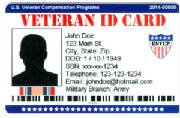|
|
|
|
|
|
Did You Know? FOOT OR HAND (38 CFR 3.350(a)(2) AND 4.63) Entitlement to a (k) award will be found when there is loss or loss of use of one foot or one hand. Such loss of use will be held to exist when the remaining function of either is equal to that of an amputation stump (below the level of the elbow or knee) with a suitable prosthesis in place, were amputation to be performed.
BOTH BUTTOCKS (38 CFR 3.350(a)(3) AND 4.64) The (k) award is payable for loss of use of both buttocks when there is severe damage to muscle group XVII, bilaterally, so as to make it impossible for the person to rise, without assistance, from a seated or stooped (fingers to toes) position and inability to maintain posture stability (stand erect). The assistance may be done by the person’s own hands or arms and, in the matter of posture stability, by a special appliance. Payment of the (k) award for loss of use of both buttocks is payable even when there is separate entitlement to SMC for loss or loss of use of both lower extremities (38 USC 1114(l) through (n)); however, appropriate tests must clearly demonstrate that there is such additional loss.
EYE (38 CFR 3.350(a)(4) AND 4.79) Loss of use or blindness of one eye, having light perception only, so as to entitle a veteran to the (k) award, will be held to exist when there is inability to recognize testers at one foot and when further examination of the eye reveals that perception of objects, hand movements or counting fingers cannot be accomplished at a distance of three feet.
DEAFNESS (38 CFR 3.350(a)(5)) Entitlement to the (k) award is payable for deafness of both ears, having absence of air and bone conduction. Such as deafness will exist when a VA examination shows, under current testing criteria, the bilateral hearing loss is equal to or greater than that which is require for a 100% evaluation under Diagnostic Code 6110 of the VA Schedule for Rating Disabilities.
APHONIA (38 CFR 3.350(a)(6) Payment of a (k) award is authorized for complete organic aphonia when there is a disability of the organs of speech that constantly precludes communication by speech. Total laryngectomy with tracheostomy, even if there is comprehensible speech by means of “esophageal voice” (without prosthesis), will entitle a person to a (k) award.
Full Scale Claims Report Released by American Legion The March 2014 report of the VA (Department of Veterans Affairs) Claims Backlog Working Group was recently released. The working group's report focused on three areas of improvement: (1) veterans must be given every tool to understand the claims process and what they can do to provide information that the Veterans Benefits Administration (VBA) needs; (2) VBA and VA's regional offices (VAROs) must make structural changes to ensure that claims are being processed accurately and efficiently; and (3) Federal agencies need to transfer requested information more rapidly and to process that information in a timely fashion. The report is available on the American Legion website. [Click Here to Download Report]
Free Hearing Aids
Did you know veterans who are enrolled in the Department of Veterans Affairs (VA) health care system may be eligible to receive free hearing aids, glasses or contact lenses? These “sensorineural aids” are provided at no charge to veterans who are determined to need the devices, even if the veteran is not “service-connected” for hearing or vision impairment.
Such services are considered part of the preventative care package for all veterans enrolled in VA health care system who meet certain eligibility criteria.
For some veterans, there may be a $50 co-pay depending on the veteran’s enrollment priority group status. There is no co-pay for the devices or the batteries, nor are there any charges for visits for the purpose of adjusting, repairing or modifying hearing aids and/or glasses.
|
|
|
|
|
|
|

